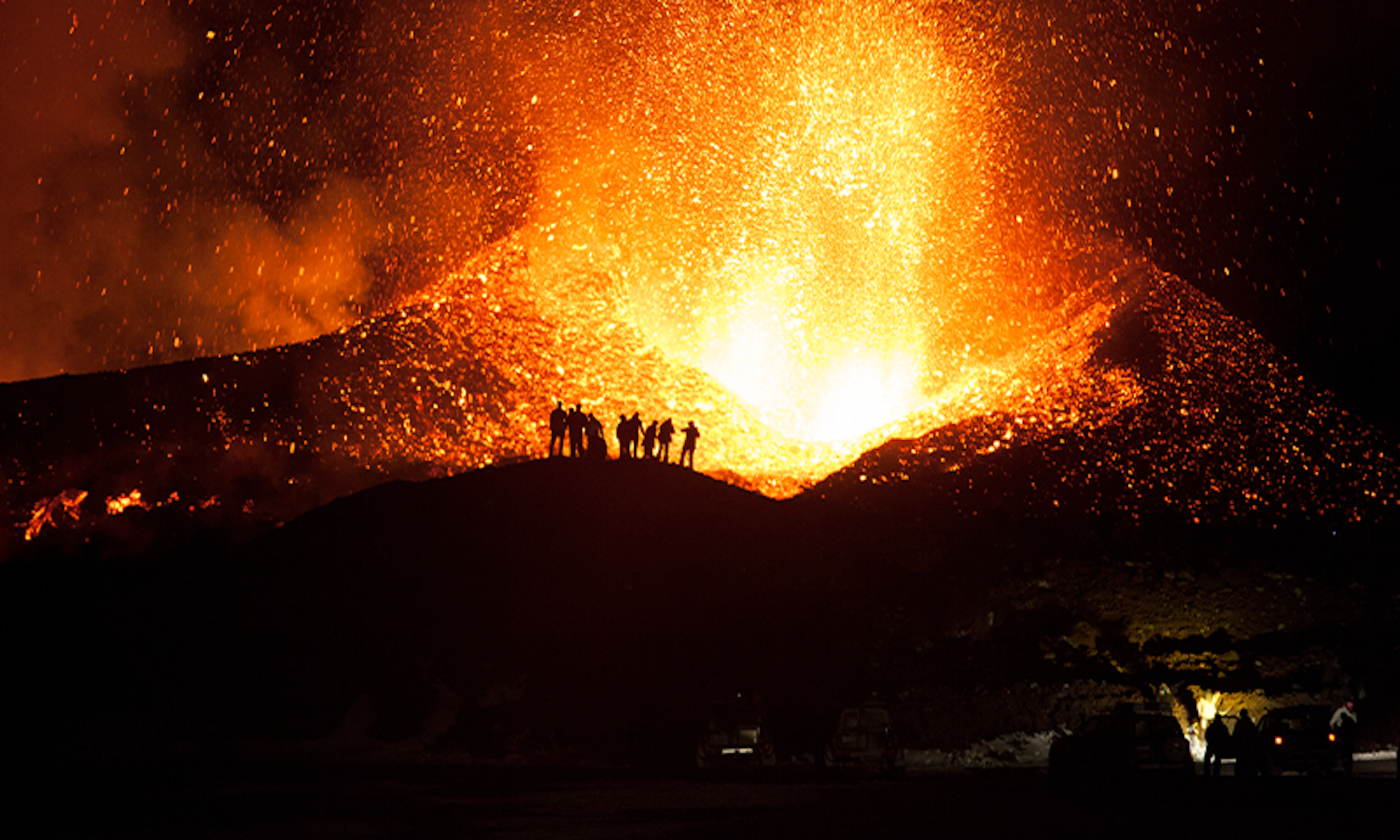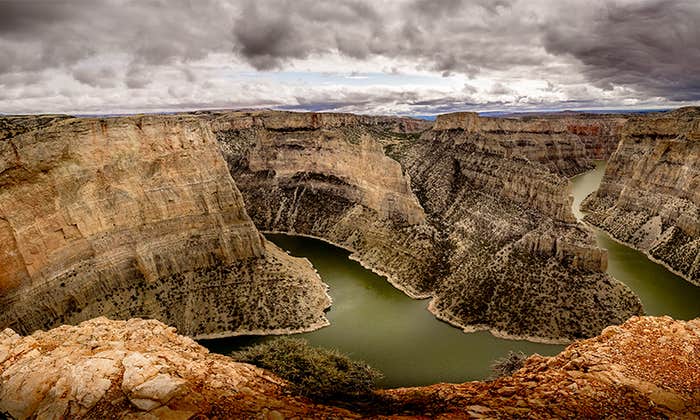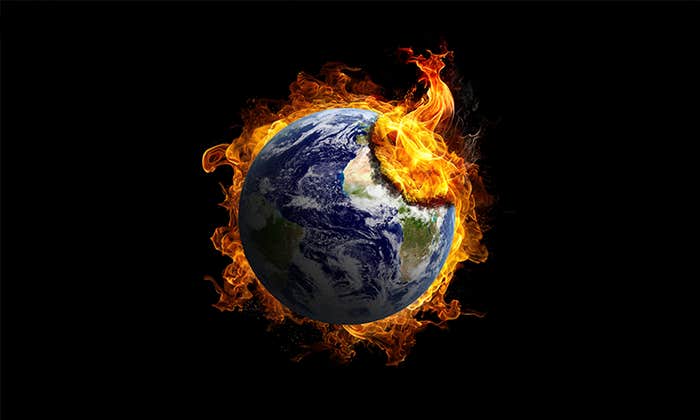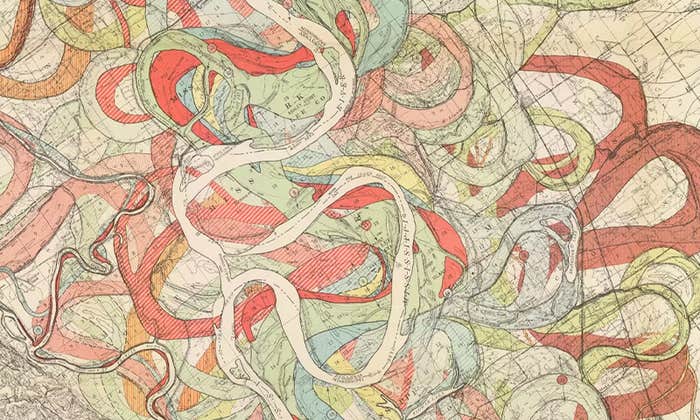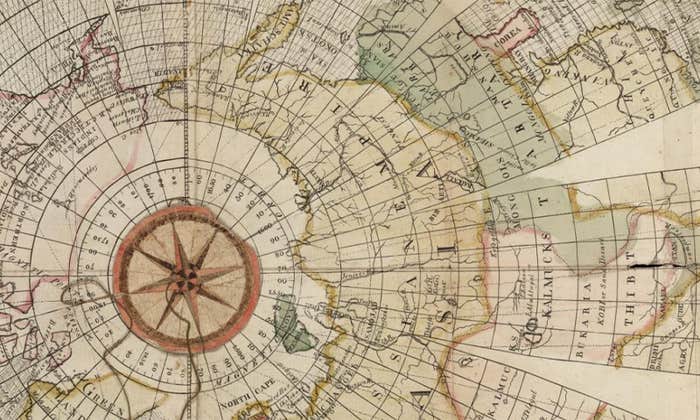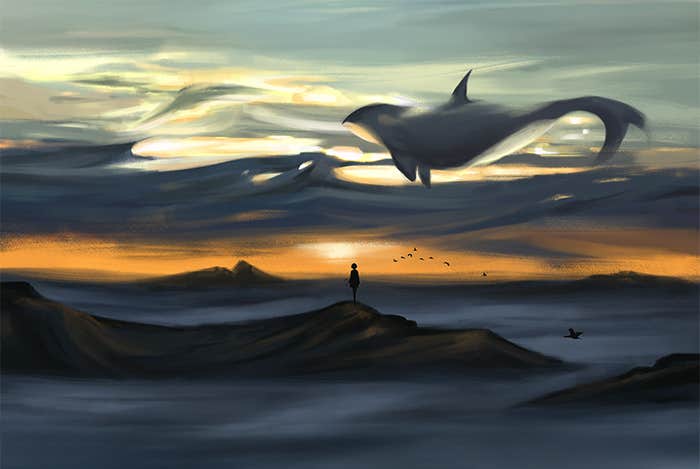Mike Cassidy was there in 2010 when Eyjafjallajökull, a volcano-covering ice cap in Iceland, erupted. It shut down European air space for weeks, costing the economy billions. Cassidy, a Ph.D. student at the time, had been invited on a research cruise to the country by scientists studying the ocean. From the research vessel, he got an amazing view of the volcano as it was erupting. The scientists wanted to know whether the volcanic plume was fertilizing the ocean, making an impact on the small creatures, like phytoplankton. They asked Cassidy whether they should go underneath the volcanic plume, and what might happen. He didn’t know what to say—he hadn’t done it before—but let them know that it could either go one of two ways: They could go in and maybe not notice anything. They might get a speck in their eyes, might feel a bit of ash. Or the whole ship could be blackened with ash. “We went in,” Cassidy recently told me, “and the whole ship just went black. We had to drive straight out of the plume. They had to clear all the ship filters.”
Lately, Cassidy’s been mulling over the risks of large eruptions. He’s an associate professor of volcanology at University of Birmingham, England, and currently a visiting fellow at the University of Oxford studying what makes eruptions dangerously explosive. More recently, he went to Mount Rinjani, which is on the island of Lombok in Indonesia. “It was just quite humbling to be on top of that volcano,” he said. In the 13th century, Rinjani erupted, causing a mini ice age lasting several hundred years that resulted in the Thames River, in London, freezing over. A mass grave of the volcano’s faraway victims was found in the city. “It was fascinating to go there,” Cassidy said, to a place that “had such huge effects on the other side of the world.”
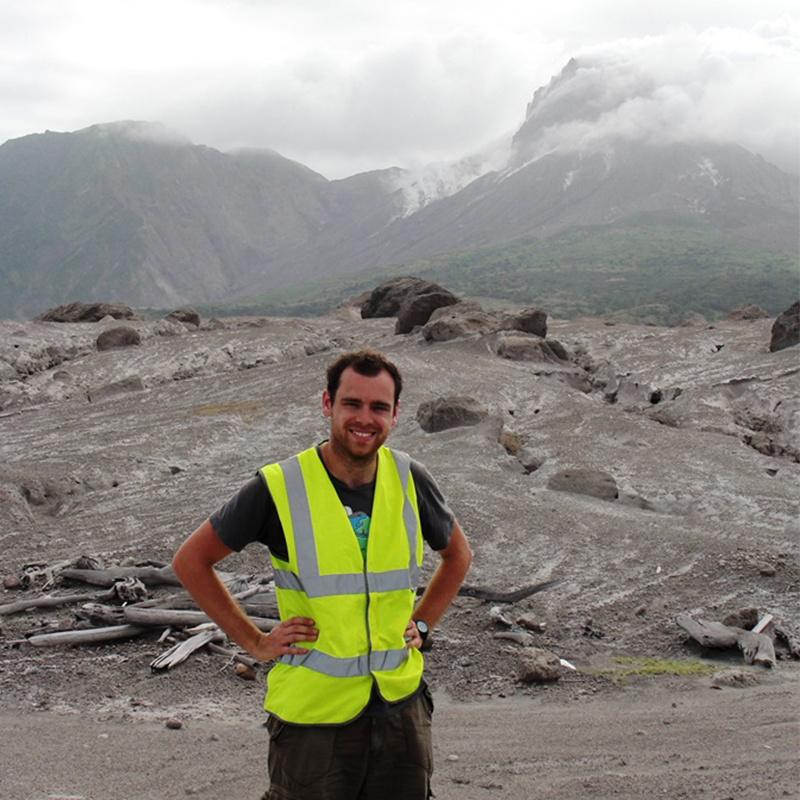
More people today, he thinks, should feel as he did on Rinjani, humbled by the power of volcanoes. This August, Cassidy wrote an article in Nature headlined, “Huge volcanic eruptions: time to prepare.” He co-authored it with Lara Mani, a research associate at the Center for the Study of Existential Risk at the University of Cambridge. The authors argued the massive eruption in January of the Hunga Tonga–Hunga Ha‘apai volcano is a “wake-up call.” They called it the “volcanic equivalent of a ‘near miss’ asteroid whizzing by the Earth.” Yet it was relatively small compared to what’s likely to come. In Nature, Cassidy and Mani note that the Tonga eruption would be 10 to 100 times smaller than one we’re due for this century.
How do we prepare for an eruption that isn’t a near miss? Nautilus caught up with Cassidy to find out.
Why do you say the recent Tonga eruption was a wake-up call?
We first started really thinking about this a few years ago in the COVID-19 lockdown. We saw how countries were not that prepared. But then the biomedical community took monumental steps to get these vaccines and other treatments ready for us in record speeds. Lara and I talked to each other, and we said, “I really don’t think that the volcanology community is that prepared and would fare as well as the biomedical community has.” Then a year later, we saw this massive volcanic eruption that sent shock waves around the world. We’d never seen this before with modern day instruments. We saw this in Krakatoa in 1883 and it sent this tsunami, and this big ash cloud. Tonga only lasted a few hours but had all these huge effects. We were totally caught unawares. The closest seismometer was in Fiji, which was about 700 kilometers away. This volcano was erupting mildly, some little explosive eruptions, but they didn’t have the facilities or the know-how or the resources to monitor this. The satellite systems that we had weren’t able to measure this properly in real-time to understand what was going on.
You’ve written that there’s a 1 in 6 chance of a really large eruption this century. How big are we talking?
A magnitude seven. Rinjani was a magnitude seven. It caused a mini ice age and famine across the world. It wasn’t even a super eruption. Those super eruptions are 10 times larger. The odds of one occurring are about 1 in 170 this century. A really large eruption, one down from a super eruption, which could cause mass disruption, is a 1 in 6 in the next 100 years. It could cause cascading failures for lots of different things. And it would be great if it were taken more seriously.
Most volcanoes are not well monitored.
How do you know the odds of a really large eruption are 1 in 6?
There’s some recent studies that have looked at ice cores, both from Greenland and from Antarctica, from both poles. And they’re able to pick out the volcanic eruptions in the ice cores, because they send out these really large peaks in sulfur. Once they see these large peaks in sulfur, they can date those large peaks in sulfur and tell us how large these eruptions were, and how many there were for a given period. That gives us our frequency. What the ice cores don’t tell us is which volcanoes were responsible for those eruptions. And that’s where we really need to do the work.
The Tonga eruption didn’t tick the box for the 1 in 6 chance this century?
No. That was actually 10 or even 100 times smaller than the ones we are talking about, eruptions that released more sulfur into the stratosphere than the Tambora eruption in 1815. And actually, because Tonga was slightly submarine, what that did is it stripped out loads of the sulfur that erupted, and perhaps it didn’t have a big sulfur content in the first place. That’s important because sulfur is the thing that really cools the air. The quirk of the Tonga thing is that because it erupted underwater, it vaporized a huge amount of sea water up into the sky. There’s 10 percent of water in the stratosphere, which is never there. That water could have a warming effect on the globe in the next few years. This is something we never knew could happen. But it will fall out.
How would you assess the humanitarian response to the Tonga eruption?
The humanitarian response was really tricky because they had to fly a plane over from New Zealand, and it couldn’t land because all the ash was on the runway. They had to wait for it to be cleared four days afterward. The submarine systems, the cables, were completely cut off. The whole kingdom of Tonga was basically a black hole in terms of communication. We didn’t know whether hundreds or thousands of people had been killed, or what sort of state they were in. That was a signal to us, and the global volcano community, that there’s no organized network that really took charge of this in that immediate sense. We just felt this is completely lacking. There really is not much going on at a global scale. We are not able to monitor volcanoes that cross borders. We really need to advocate for a global coordinated volcano unit that monitors and responds to these large eruptions, like what was missing in Tonga.
How can we prepare for massive volcanic eruptions?
There’s lots of things you can do. Most volcanoes are not well monitored. If we’re able to sense they’re going to erupt, and we know that they could pose a big threat, then we could evacuate lots of people. There could be millions in some places—in Southeast Asia, there’s tens of millions of people living within 50 kilometers of a volcano. Or we could at least educate them and make them ready for these large sorts of eruptions. That already mitigates a large amount of the loss of life, but not just loss of life. We’re also talking about all the cascading effects that happen from that. You can limit the damage done to a country’s infrastructure—their electricity network, trade, water, and food systems—with prior knowledge. We can also pinpoint where the risks are and increase the monitoring of those particular volcanoes.
A volcanic winter can cool the world for anything from 1 to 5 degrees globally.
What would increased monitoring of volcanoes look like?
We could do something like now-casting, where we can monitor with satellites—which we don’t do properly at the moment—exactly how big the eruption is. That can tell us downstream, thousands of kilometers away, whether there’s going to be ash falling on someone’s roof, and whether it has the potential to collapse that roof. When you have these really large eruptions, that’s going to be a really large risk to anyone within a few hundred kilometers or thousands of kilometers. They think they can hide inside and avoid breathing in the ash and the gas, but their roof could collapse. We can set up things like this that tell people in this location, “Expect this amount of ash. You need to clear your roofs. You need to avoid these valleys because these valleys will be inundated with massive volcanic mudflows. You need to get away from the coast because there’s going to be tsunamis from these large eruptions and the flows that they produce.”
What sort of signs do you look for to forecast an eruption?
Several things. One of the best ways is using a seismometer, which tells you about the earthquakes that occur before volcanic eruptions. All the volcanic eruptions will show you some sort of warning that magma beneath the surface is cracking the rocks, increasing the stress inside the magma reservoir. It might be quick, a few days. Normally it’s several months. That’s the main useful way for looking at volcanoes to sense if there’s going to be an eruption.
We also look at whether the volcano’s inflating or deflating. We can measure that on the ground with little sensors that tell when the ground is shifting up or tilting. It’s called a tilt meter. But we can even measure this from satellites. And it can tell us with sometimes millimeter or centimeter resolution how far the surface of the Earth is moving up and down in some places. This can be a really good indication of whether the magma beneath the surface is moving to the surface. Satellites can also tell us about the temperature of the crust on the surface of a volcano. When you have lots of magma entering the system, the heat has to go somewhere. It goes up. And it’s something that you can’t see from the surface necessarily, but if you have a satellite that measures infrared, then it’s able to pick up some of these signatures. There’s de-gassing signatures as well. You measure sulfur and other species.
What are some cases where monitoring has worked well to prepare people for an eruption?
There’s been some successful early warning examples. For instance, in Merapi in 2010, in Indonesia, they effectively evacuated 25,000 people. That was several days beforehand. And in the Caribbean last year, 20,000 people were safely evacuated one day before the explosive eruption started. We’re pretty good at telling if there’s going to be an eruption. Sometimes we can say it’s likely that it will happen in the next few days or next few weeks, or perhaps even a month or two.
I sense a caveat coming.
Right. What we’re not so good at, at the moment, is working out how big that eruption will be, and what style that eruption will be. Will it be something like a big lava flow, like you can see in Iceland, or will it be something that’s quite explosive like we saw with Tonga? That’s where monitoring needs to improve, and that will improve as our science progresses.
How are monitoring improvements shaping up at the moment?
One of the more exciting bits of progress going on is the magma bore hole observatory, an international magma observatory in Iceland. Back in 2009, they were looking for geothermal energy in Iceland. They were drilling two kilometers underneath the crust. By accident, they drilled into a magma pocket. This has happened several times before—in Kenya, Iceland, also in Hawaii. And nothing happened. There was a bit of collateral damage to the drill bits, but it didn’t cause any sort of massive eruptions. Now that that’s happened, they’ve seen that this is an amazing opportunity to drill again, now on purpose, and interact with the magma, understand it.
What advances could come from setting up a magma observatory?
We can perhaps put down more sensitive sensors down there to work out what gas is coming out, to understand the stress of the rocks. All manner of advances could come from that. The next logical step in that research is working out if we can somehow manipulate that magma to perhaps even de-gas it, to let the pressure off, and even the rocks around it, so that we can diffuse its explosivity. I think they’re drilling this hole in 2024. That’s a really exciting opportunity.
Is there any way humans could someday directly intervene in an eruption to make it less lethal or explosive?
This is something we advocate for. It’s a bit more speculative, but one of the biggest hazards is the effect of a volcanic winter in some of these large eruptions that can cool the world for anything from 1 to 5 degrees globally. And that means that it’ll be very distributed. In some areas it might cool by 8 degrees; in other areas it might warm by 1 degree. It has disparate effects, just like modern-day climate change. If we could manage to get the sulfur that gets ejected to rain out much quicker, before it circulates and cools the globe, then you could mitigate a lot of these bad effects, like a global famine that could likely arise from that event. So instead of an ash-rich eruption that can travel thousands of kilometers and have really downstream effects, perhaps we’re just producing a lava flow within a 5- or 10-kilometer radius, which has very minimal effects.
What do you think about people using AI to study volcanoes?
Machine-learning algorithms combined with our more intense monitoring will help us a lot. That work has started in New Zealand, at White Island Volcano in Whakaari, which is where some 50 tourists died two years ago. Also, the rise of these pseudo-satellites—which are kind of like high-altitude, long-duration, long-endurance drones that can fly really high in the stratosphere—will help us forecast eruptions. They can hover at a volcano for several months. We might find that we have a volcano that’s starting to show some activity, maybe massive ground swelling, maybe months before an eruption, which often happens. That’s often the first signature. We can send one of these drones to sit on top of the volcano safely to monitor it from there. ![]()
Brian Gallagher is an associate editor at Nautilus. Follow him on Twitter @bsgallagher.
Lead image: Olivier A. A. Vandeginste / Shutterstock















